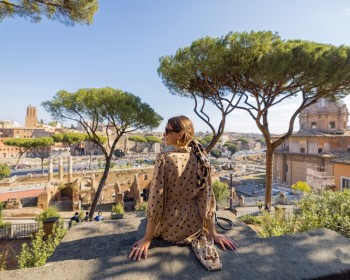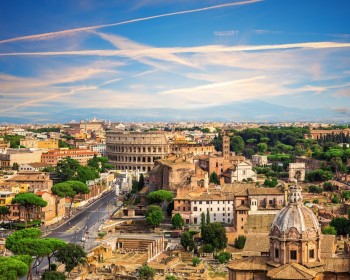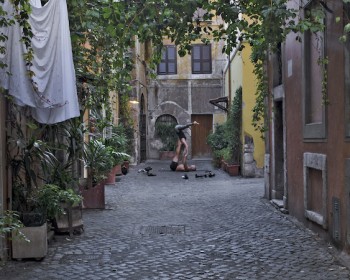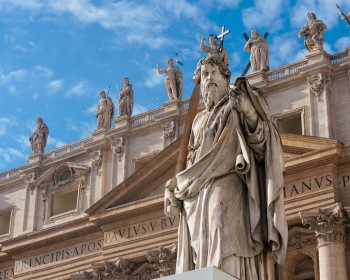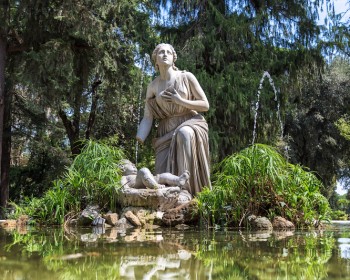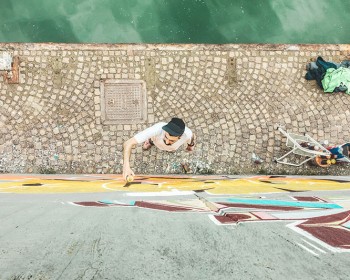Basilica of St. Stephen in the Round on the Caelian Hill
Located at just 10 minutes walking from Colosseum on the Caelian Hill, one of the original 7 Hills of the foundation of Ancient Rome, the lovely Basilica of St. Stephen in the Round is an ancient Basilica named after both Saint Stephen, the first of Christians’ martyrs whose body was found in the Holy Land, and Stephen I, the first King of Hungary who promoted Christianity in its kingdom and converted its fellow citizens.
The first traces of its construction dates back to 468 AD, when it was consecrated by Pope Simplicius.
St. Stephen’s architecture is unique in Late Roman time: in fact it was the first one to have a circular plan. Probably commissioned by Pope Leone I to be built over the ruins of another Church, the Basilica formerly had 3 concentric ambulatories, delimited by 22 Ionic columns, that surrounded a circular central space.
Adorned with impressive mosaics and marbles in the 6th Century, several frescoes were later added to its interiors. Among them, some were painted by Niccolò Circignani and Antonio Tempesta who depicted scenes of martyrdom.
As a memory of the great King Stephen I, the Basilica of St. Stephen in the Round hosts the beautiful Hungarian Chapel, which is the final destination of many hungarian pilgrimages.
Doria Pamphilj Gallery
Located along Rome main street, Via del Corso, Doria Pamphilj Gallery is definitely one of the largest art collections in Rome and it is worth a visit. Most of its fascinating art pieces were gathered in the XVI Century when the wealthy families of Doria, Pamphilij and Landi Aldobrandini became one through a marriage. Today, it is still owned privately by the family.
It is possible to admire the main collection in the state rooms, with masterpieces by italian and international artists such as Caravaggio, Titian, Velazquez, Raphael, Parmigianino and many more. Among them, the portrait of Pope Innocent X, born Pamphilij, by Velazquez is one of the highlights.
There are more areas with medieval and Byzantine art pieces as well.
Park of the Aqueducts
Located in the Southeastern area of Rome, the Park of the Aqueducts is part of the greater area of Appian Way Regional Park. It takes the name from the aqueducts built by Romans during the Ancient Times.
There are a total 7 constructions, both above ground level and underground, that still stand today as witness of Romans deep knowledge of architecture and materials. The most notable are certainly Aqua Felice, whose terminus is in the monumental Fountain of Moses in the Quirinal Hill, and Aqua Claudia, that could even provide water to 14 districts of Rome during Emperor Nero’s Kingdom.
The Park of the Aqueducts is the ideal stop while visiting the Ancient Appian Way and between Rome tours.
Palazzo Massimo alle Terme
This is the main place where the art collection of Museo Nazionale Romano is hosted, just across Rome central Station Square. The exhibition is arranged on four different levels of the building, with art pieces of Ancient Times that mostly belong to Ancient Rome, both Republic and Empire years.
If you love well-preserved roman sculptures, this is an unmissable stop. Moreover, Palazzo Massimo hosts bronze and ivory masterpieces, a portrait gallery of marble faces of men and women and an outstanding collection of frescoes and mosaics, that once were used to embellish houses of wealthy families.


